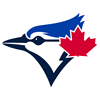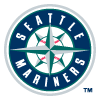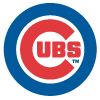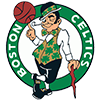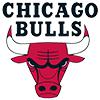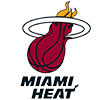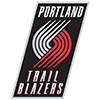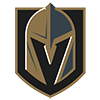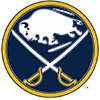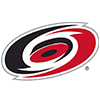Accompanying this article is the brand new First-Year Player Draft Top 100, which I would recommend opening in a separate tab. I've provided descriptions of every player there, along with ETAs. If you want more detail or opinions on any players, don't hesitate to ask me in the comments or on Twitter.
There are many ways to approach a first-year player draft, but here are my general biases:
- Elite college hitters are the absolute cream of the crop. Not every class has more than one or two of these. They get to the big leagues two-to-three years earlier than their prep counterparts and we can have much more confidence in their hit tool grades, as they will have typically played in a tough conference or will have experience in the Cape Cod League.
- Elite international hitters who typically sign on July 2 (but will instead be signing on Jan. 15 for the foreseeable future), along with elite prep hitters, are the next best players to invest in. You can get superstars from these subsets, but they are typically at least four years away from the majors and have the potential to completely fizzle out early on in pro ball.
- Top college pitchers are the next best players to go after. They are risky, but they can join big-league rotations in two-to-three years. We can have more confidence in their command grades and they are less reliant on projection.
In this class, there aren't any truly elite prep hitters
Accompanying this article is the brand new First-Year Player Draft Top 100, which I would recommend opening in a separate tab. I've provided descriptions of every player there, along with ETAs. If you want more detail or opinions on any players, don't hesitate to ask me in the comments or on Twitter.
There are many ways to approach a first-year player draft, but here are my general biases:
- Elite college hitters are the absolute cream of the crop. Not every class has more than one or two of these. They get to the big leagues two-to-three years earlier than their prep counterparts and we can have much more confidence in their hit tool grades, as they will have typically played in a tough conference or will have experience in the Cape Cod League.
- Elite international hitters who typically sign on July 2 (but will instead be signing on Jan. 15 for the foreseeable future), along with elite prep hitters, are the next best players to invest in. You can get superstars from these subsets, but they are typically at least four years away from the majors and have the potential to completely fizzle out early on in pro ball.
- Top college pitchers are the next best players to go after. They are risky, but they can join big-league rotations in two-to-three years. We can have more confidence in their command grades and they are less reliant on projection.
In this class, there aren't any truly elite prep hitters and there are a couple really high-end college starters, so I prefer Max Meyer and Asa Lacy to Zac Veen and Ed Howard, but in any given year I may have a couple prep hitters above the best pitching prospect in the class.
- The term "lottery ticket" legitimately applies to prep pitchers. You shouldn't expect them to pan out, but if they do, they can become Clayton Kershaw or Jose Fernandez. I had Mick Abel and Nick Bitsko basically tied heading into the draft, and Bitsko has already undergone shoulder surgery. Abel looks the part of a future ace from a stuff and size standpoint, but you should basically assume he will also need surgery on his elbow or shoulder sometime before reaching the majors.
- Players from the KBO and NPB are the bane of my existence when it comes to ranking for FYPD, and you'll note that I explicitly DO NOT rank international signees who are 25 or older in the top 400. They aren't prospects in the classic sense of the word. The KBO is maybe a slight tick above Double-A in some regards and a slight tick below Double-A in others, which is why I'm not even ranking Sung-Bum Na, who is already 31 and showing signs of decline. I'm expecting him to be a replacement-level MLB hitter in a 20-team dynasty league, which is not someone worth drafting. The NPB is a different story, especially when it comes to pitchers. We've seen several big-time success stories on that front, and Tomoyuki Sugano could be the next, although he's still not a player you should be aggressive about early in a FYPD.
The big strength of this class is college pitching, and all pitching prospects slide in first-year player drafts, so you could legitimately get a pitcher like Slade Cecconi, who I have ranked in my top 20, outside of the top 40 in your FYPD. You could get pitchers like Jared Shuster or Tanner Burns, who I have ranked in my top 25, outside of the top 50 in your draft. I know pitching prospects aren't fun to draft and some of you will probably bypass them regardless of what I say, but don't trick yourself into thinking some prep hitter or second-tier college hitter is "safe". None of these guys are "safe" outside of the top five or six hitters.
What follows is pretty simple, and something I hope to turn into an annual article/exercise. I am going to go pick-by-pick in a standard First-Year Player Draft and explain what I would do if I had that pick or a pick in that specific range. I haven't thought of every scenario, but I've tried to factor in most of the realistic ways your draft could play out. I've included pictures of different ranges in my top 100. The colors signify distinct tiers, so Spencer Torkelson, Austin Martin and Nick Gonzales are all in their own distinct one-player tiers.
1
Select Spencer Torkelson. I don't think it matters at all where Tork ends up on the diamond for fantasy. Third base and first base are similarly deep. What matters is that he will likely be a top-five fantasy first baseman for roughly a decade.
Options: Party time.
2
Select Austin Martin. He has shades of Derek Jeter and Ozzie Albies from a fantasy production standpoint. Martin probably won't ever be a first-round fantasy pick, but he should be a top-50 pick in his prime and he should reach the majors in short order.
Options: Fist pumping.
3
Before the draft, you should have reached out to the person with the No. 2 pick to explore trading No. 3 and a lesser pick/prospect for No. 2. Some people who are picking at No. 2 may not see a big difference between the player they are getting at 2 vs. 3. (I'm not suggesting trading up from 2 or 3 to No. 1 because you'd probably have to overpay to do so.) If you can attach a prospect in the 125-200 range or a FYPD pick in the 30-50 range to move up from No. 3 to No. 2, I think it's worthwhile. There is not a noticeable gap in ceiling between Martin and Nick Gonzales, but I think Martin beats Gonzales to the majors and has a higher floor. If you cannot trade up and Martin is off the board, select Gonzales.
Options: Trade up one spot to get Martin; select Martin if he falls; happily select Gonzales.
4
If Martin (highly unlikely) or Gonzales (possible) is available, then it's an easy call. I don't see the value in trading up from 4 to 3, since Gonzales could be here at 4, but it's worth checking with the person at 2 what it would cost to trade up before the draft. If Martin and Gonzales are gone, you should let the rest of the league know that the pick is available to the highest bidder.

I don't see much difference at all between the viable options after Gonzales, but someone in your league will probably think Zac Veen, Ha-seong Kim or someone else is worth trading up for. At the end of the day, I'd take anything of distinct value to move down from 4 to anywhere from 5-10. If you're only getting a replacement-level prospect (depends on your league size) or a FYPD pick outside the top 50 to move down, I'd just make the pick, but you should be aggressively looking for a trade partner here. If you just can't find a taker, then you should take the type of prospect who fits best on your team. Want to gamble on an ace? Take Max Meyer or Asa Lacy. Want a young hitter with upside? Take Wilman Diaz, Carlos Colmenarez, Veen or Cristian Hernandez. Want a win-now piece? Take Kim.
Options: Select Martin or Gonzales if one falls; trade the pick; select one of Meyer, Diaz, Lacy, Colmenarez, Veen, Hernandez, Kim.
5
Martin probably won't fall this far, but Gonzales could. He'd obviously be a steal here. Assuming they are both gone, you should basically use the exact same trade-down strategy I highlight at No. 4.
Options: Select Gonzales if he falls; trade the pick; select one of Meyer, Diaz, Lacy, Colmenarez, Veen, Hernandez, Kim.
6-9
Gonzales should be gone at this point, so you're still exploring trading down 1-4 spots.
Options: Trade the pick; select one of Meyer, Diaz, Lacy, Colmenarez, Veen, Hernandez, Kim.
10-12
Meyer, Lacy, Veen and Kim will probably all be gone at this point, but one or two of the top international guys should still be here. Landing Diaz or Colmenarez in this range is the dream, and settling for Hernandez is fine. If your whole league is drafting off my rankings, then none of them will fall past 10, but I think it's exceedingly likely that a couple of the draftees I'm lower on (maybe Emerson Hancock, Garrett Crochet, Robert Hassell or Austin Hendrick) will be selected in the top 12, which will allow value to fall to you in this range. If you just don't like the idea of taking a 17-year-old here, you should try to trade down or out.
Options: Select one of Diaz, Colmenarez, Hernandez; trade down or out.
13-20
The further you get into a FYPD, the more wide-ranging the valuations are. The five hitters I'm targeting in this range are a great example of that. There are smart people who think Garrett Mitchell should be going 5-10 spots higher than this, and there are smart people who think Pedro Leon should be going 20 spots lower than this, so accurately predicting who will be the best player available at your pick in this range will be impossible. That said, I'm fairly confident you'll get one of these five. In an OBP league, I'm hoping to get Mitchell or Wells.

If you're picking in the 18-20 range, you will probably have to settle for Leon, but you could always catch a break. I think Leon could be the No. 5 hitter in a good MLB lineup and he has a chance of reaching the majors as early as 2021 or the first half of 2022. He has huge right-handed pop and makes contact at a solid clip.
Options: Select Diaz, Colmenarez or Hernandez if one falls; select one of Ed Howard, Mitchell, Austin Wells, Pete Crow-Armstrong, Leon; trade down or out.
21-40
This is the range where you can really start to profit, but you may have to be willing to take a pitching prospect to do so. Hassell and Hancock won't be here, so don't worry about them. This is also probably past the range where Diaz, Colmenarez, Hernandez, Howard, Mitchell, Wells or Crow-Armstrong could fall, but Leon most certainly could be available in this range. I love Cade Cavalli, Slade Cecconi, Jared Shuster and Tanner Burns relative to the rest of the industry, and you have a pretty decent chance of landing one of Cecconi, Shuster or Burns 20-plus picks after Hancock comes off the board — that's why this is such a money range.

Chris McMahon would have been one of my top targets in this range as well if he'd landed anywhere other than Colorado. Cecconi has boosted his stock even further since the draft, so be careful not to get cute, thinking you can get him outside of the top 30 or so — you may be able to, but it would be found money at that point. I've seen Shuster and Burns ranked outside of some top 60s, so realistically I could have stretched this range a little further, but I wanted to cover you in case multiple people in your league are drafting off my rankings. Erik Halterman wrote a great piece a few weeks ago on the expected KBO and NPB imports, and I buy his assertion that Tomoyuki Sugano could be a Masahiro Tanaka type (career 3.74 ERA, 1.13 WHIP) from the get-go. Taking a 31-year-old pitcher in a FYPD is not my style, but if you're a contending team and can get a top-40 starting pitcher with a second-round pick in a 20-team FYPD, that's a compelling way to go, especially if you're not a big trader.
Options: Select Leon if he falls; select one of Cavalli, Cecconi, Detmers, Sugano, Shuster or Burns; trade down or out.
40-60
Depending on how many people in your league use my FYPD rankings, you could potentially get someone in my top 35 as late as pick 100 — the final pick in a five-round, 20-team FYPD. This is the beauty of first-year player drafts. Everyone diverges so much after the top 15-20 guys, that players will be getting selected inside the top 50 who aren't in my top 100, and players who I have in my top 35 may go undrafted in some leagues.
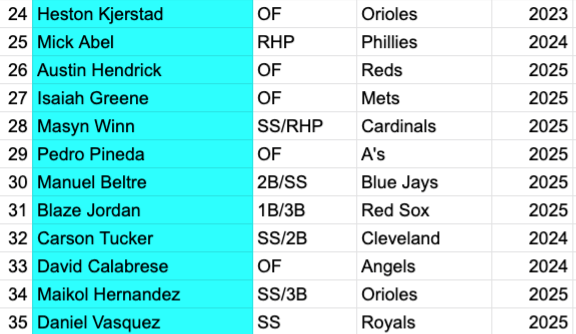
It's likely that at least one of the pitchers from the previous tier will be available in this range (almost certainly not Cavalli, Detmers or Sugano), but you won't be getting Heston Kjerstad, Mick Abel or Hendrick. I think I have them properly rated given the risk involved, but it's unlikely any of those three make it out of the first 20-25 picks. Isaiah Greene, Masyn Winn, Pedro Pineda, Blaze Jordan, Carson Tucker and David Calabrese will get selected somewhere in the 20-80 range in most FYPD, so some of them will be gone while a few remain when you get to this range of your draft. Manuel Beltre, Maikol Hernandez and Daniel Vasquez are all getting sizable bonuses and have very promising futures, but they haven't been hyped up enough to go in the top 50 in most FYPD. Many dynasty players like targeting the very best international signees, but once the top 4-5 guys are gone from a class, the remainder of the J-15 crop will probably linger for a couple rounds as managers look to select players from the domestic draft who are more well known.
Options: Select Leon, Cecconi, Shuster or Burns if one falls; select Greene, Winn, Pineda, Beltre, Jordan, Tucker, Calabrese, Hernandez or Vasquez; trade down or out.
60-100
As I mentioned earlier regarding the previous tier, you may be able to exhaust all of your FYPD picks without venturing outside my top 35. In the event that none of those guys makes it to you for your final picks, you also probably won't get any of the four prospects who make up my next tier: Dillon Dingler, Tyler Soderstrom, Crochet, Nick Bitsko. Most people rightfully don't like wasting FYPD picks on non-elite catching prospects, so Dingler specifically could slip this far. Even with their recent injuries, Crochet has enough hype to go in the top 25 in most leagues, while Bitsko has the pedigree to get scooped up in the 40-60 range despite undergoing shoulder surgery.

The next tier is made up mostly of domestic players, and it's at this point in the rankings where we are dealing with some non top-200 prospects. I almost never have to select a player I don't have in my top 200 in a FYPD, but in really deep leagues, you will have to navigate these waters.
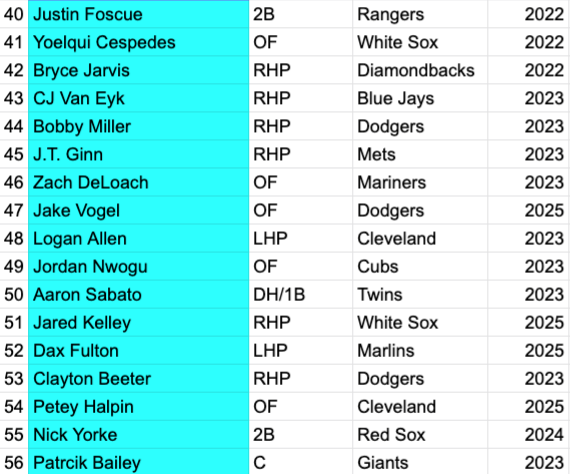
Many of the players in this range, such as Justin Foscue, Yoelqui Cespedes, Bryce Jarvis, Zach DeLoach, Aaron Sabato, Jared Kelley, Nick Yorke and Patrick Bailey will probably be gone, but there are a handful of pitching prospects and risky position players I like in this range. Again, I expect someone from my top 35 to be available into the 70s of your FYPD, but we have to be prepared for anything. This is also a range where you're going to struggle to get anything worthwhile in a trade down/out move.
Options: select Shuster, Burns, Winn, Pineda, Beltre, Jordan, Tucker, Calabrese, Hernandez or Vasquez if one falls; select one of CJ Van Eyk, Bobby Miller, J.T. Ginn, Jake Vogel, Logan Allen, Jordan Nwogu, Dax Fulton, Clayton Beeter or Petey Halpin.
Best of the Rest
Here are my final two tiers:
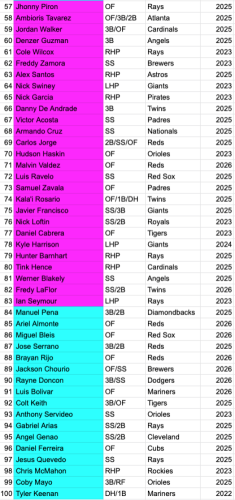
Hopefully you won't have to dip this far, but if you do, there is still upside to chase, but you have to dip into the riskiest subsets: high schoolers and non-elite international signees. With the J-15 guys, I'm mostly looking at body projection, bat speed, swing fluidity and consistency in putting barrel to ball. All I have to go on are videos from Baseball America and each player's personal Instagram page, but every player in this range is risky to some degree. Even the college hitters like Nick Loftin and Daniel Cabrera are risky in that they could easily fail to do enough damage to be regulars.
There are international guys who did not make my top 100 but will be getting seven-figure bonuses on Jan. 15. I really just stick to my own evaluations of what little tape I can see on these guys.
Again, feel free to ask me about any specific players in the comments, and let me know if there's something I could do next year to make this article more helpful. Good luck, and happy drafting!











